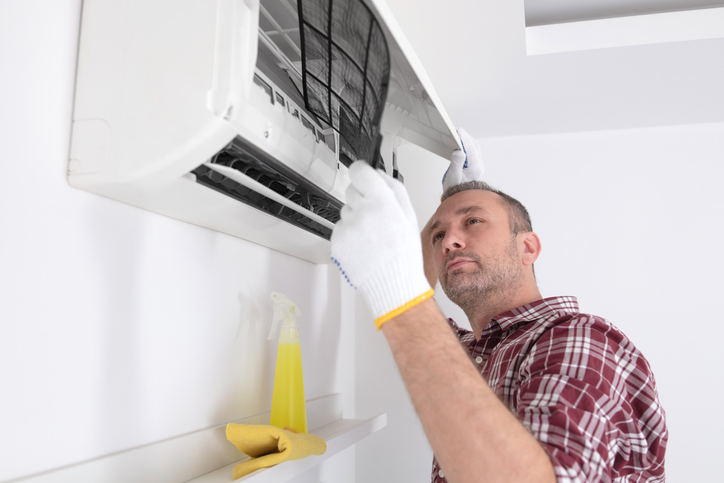Introduction
Modern air conditioning units are designed to maintain optimal refrigerant levels for efficient cooling. When refrigerant levels rise beyond the system’s intended range, performance suffers—and your electricity bill often rises in response. Knowing the symptoms of an overcharged AC system can help you catch and correct these issues before they become more expensive. Homeowners who’ve recently scheduled refrigerant top-ups without full diagnostics are most at risk. The problem isn’t just about cooling—it’s about wasted energy, mechanical strain, and higher repair costs over time. This article breaks down what happens when an AC is overcharged, how it affects energy use.
How Overcharged AC Symptoms Raise Energy Consumption
1. Higher Energy Bills Without Better Cooling Output
One of the most common indicators of an overfilled AC unit is a sudden spike in energy usage without any noticeable improvement in indoor comfort. Your AC might run longer or cycle more frequently, but the air inside your home won’t feel any cooler than before. This inefficiency stems from the refrigerant’s inability to absorb and release heat correctly when over-pressurized. Compressors work harder than necessary, and fans may run nonstop in an attempt to compensate. That overexertion doesn’t translate into better performance—it simply results in more electricity being drawn with minimal output. Over time, these patterns contribute to poor energy ratings and significantly increased utility costs.
2. Reduced Airflow and Strange Noises During Operation
Another red flag is restricted airflow, often paired with gurgling or hissing noises from the unit. These symptoms of an overcharged AC result from the refrigerant pushing back against the system’s design, creating pressure in areas where none should exist.
Excess refrigerant interferes with the smooth passage of air through coils and ducts. In some cases, evaporator coils may even ice over, further restricting air circulation. The unit will try to operate under these compromised conditions, forcing the system to run longer while cooling less. These signs should prompt a quick inspection by qualified professionals before the problem affects energy efficiency further.
3. Inconsistent Cooling and Overheated Components
When cooling becomes inconsistent across rooms or fluctuates even while the thermostat is set, overcharged air conditioner warning signs may be to blame. Systems with too much refrigerant can’t regulate pressure evenly, which leads to erratic cooling behavior. In some cases, the added refrigerant causes condenser units to retain excess heat, which then radiates back into the system.
Motors and electrical components can overheat as a result, especially during high-demand hours. This heat buildup not only reduces energy efficiency—it may also trip circuit breakers, shut off cooling entirely, or lead to costly emergency AC services in Norco, CA. Energy waste multiplies each time the system attempts to restart under strain.
4. Compressor Short-Cycling or Premature Failure
Compressors are built to handle a specific refrigerant load. When too much refrigerant floods the system, the compressor must push against excessive internal pressure. This causes what technicians refer to as “short-cycling,” where the unit turns on and off frequently without reaching the desired temperature. Short-cycling is one of the most harmful symptoms of an overcharged AC, and it directly drives up energy usage.
Instead of a stable runtime with energy-saving intervals, the system burns power inefficiently in repeated attempts to stabilize pressure. If left unchecked, this stress may cause complete compressor failure—a repair that costs thousands and typically outweighs the cost of a full unit replacement.
5. Longer Cooling Cycles With Lower Efficiency Ratings
When every part of your HVAC system is forced to overwork, cooling takes longer and costs more. Extended cycle times often signal an overcharged unit working inefficiently due to improper refrigerant flow and coil temperature imbalance. While the thermostat setting may remain consistent, the time it takes to reach that setting stretches longer with each use.
That extended runtime is expensive. Your AC’s Seasonal Energy Efficiency Ratio (SEER) rating is based on the correct refrigerant load. With overcharging, the system falls far below its rated efficiency, meaning your energy bills don’t reflect the output you’re supposed to be getting. Fixing refrigerant issues can immediately restore your SEER rating and reduce unnecessary power use.
The symptoms of an overcharged AC system aren’t just minor performance quirks—they signal deeper inefficiencies that impact energy use, mechanical lifespan, and indoor comfort. High pressure levels compromise every component, from the compressor to the evaporator coil, resulting in poor performance and increased electric bills. When cooling costs rise while performance declines, it’s important to get a full system check, not just a refrigerant top-up. Working with professionals who understand refrigerant dynamics and airflow science is key to restoring comfort and lowering your energy burden. Spotting these issues early leads to fewer repairs, improved system health, and better indoor air quality.
Conclusion
Spot symptoms of an overcharged AC system before your energy bills spike. Trust Chill Factor Cooling & Heating for expert diagnostics and efficient cooling system solutions today. Call us now at 951-268-6520 for immediate assistance!
📌 Local, trusted, and always ready — Chill Factor Cooling & Heating keeps your home comfortable with fast, reliable HVAC & air quality service.




